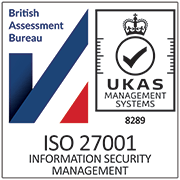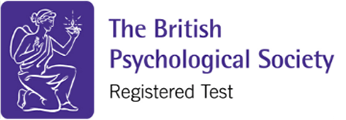Team effectiveness in 2025 – where do we go from here?
I’m super excited for today’s episode – it’s the second of a two parter on our latest research report into team effectiveness in the workplace. Last time, I mainly focused on team leaders and their strengths and skills. This time, I’m focusing on the teams themselves.
Regarding our report, please do ask our team for a copy, or pick one up from the Strengthscope website, it’s a downloadable resource. Our research is based on data from just under 1,600 team members (collected using StrengthscopeTeam™), as well as just under 1,300 leaders (collected using StrengthscopeLeader™). The data was collected in 2024, so it’s pretty fresh.
What is StrengthscopeTeam™ anyway and what data is it collecting?
First of all, a word on what we measure with StrengthscopeTeam™ – two main things. The first is the collective strengths of individual teams – that is of the 24 strengths that we have in our model of what energises the most and the least, which are the strengths that show up the most often and least often in team members Significant 7 strengths and where are the risk areas in terms of draining areas and strengths which have the potential to tip into overdrive? The second thing is the team behaviours or habits that team members report being more or less in evidence. These team behaviours (which are actually learnable team skills) include 5 elements:
- Clarity: ensuring the team has a clear set of aspirations which give the team clarity on goals, roles and responsibilities
- Trust: awareness of where the team’s strengths and risks lie…sharing this information helps to build trust
- Accountability: taking action to draw on each other’s strengths and drive towards team goals, holding each other accountable for this
- Change readiness: developing the agility to deal positively with change
- Stretch: celebrating the team’s achievements as well as regularly reviewing where the team can improve leads to continuous improvement.
Our team behaviours or skills are drawn from some of the GOAT researchers and practitioners in team effectiveness – Katzenbach and Smith, Belbin, Tuckman, Wheelan, Lencioni – and our model follows a developmental process from clarity through to continuous improvement and stretch.
What I’m going to include today is:
- What are teams best at in terms of these team behaviours or skills?
- And where are they lacking the most?
- Which team behaviours are most closely linked to overall team effectiveness?
And I’m going to give you the ‘so what can I do about this’ recommendations to make this information practically useful.
-
What are teams best at? Trust habits are ranked the highest
Across all teams in the database, the two highest-rated team behaviours relate to the ‘Trust’ area. Team members feel most able to share their ideas and views openly and honestly at team meetings, and they can rely on each other for help and support to get the job done. The third highest-rated habit (in the area of ‘Accountability’) is team members being strongly committed to achieving the highest standards by taking full ownership of their actions and results.
Overall, these results suggest that team members feel positively towards their colleagues, feeling that their colleagues are well-intentioned, trustworthy and committed to doing a good job.
This is important as trust provides a strong foundation for individual and team accountability and action. Without it, teams are unlikely to become sustainably high-performing.
Based on this data, my recommendations are to double down by encouraging teams to build trusting relationships by deepening their understanding of each other’s skills, strengths and risk areas (ask how do these strengths show up, when do colleagues most enjoy using their strengths, which tasks do they feel most naturally effective at?)
Then encourage team members to draw on each other’s strengths to partner and team effectively using complementary strengths. The more that a team gets practical experience of doing this, the more they will come to rely on, and trust, colleagues to deliver a good outcome.
-
Where do teams need to improve? They are struggling with feedback
Across all teams in the database, the lowest-rated team behaviours relate to the area of ‘Stretch’ and, specifically, feedback. Team members rate their teams as less effective in providing each other with constructive feedback to ensure the team’s overall performance is continuously improved. They are also less effective at seeking feedback from customers and stakeholders. Arguably, the third lowest-rated habit also relates to feedback (from the habit area of ‘Accountability’), as team members report that colleagues are less likely to be called to account when work is not delivered, or standards are not met.
The recommendations here are fairly self evident: Work is needed in most teams to improve proactive gathering and delivery of feedback from team member to team member, from team leader to their direct reports and from stakeholders to the team.
This is going to mean working to create a feedback culture to provide psychological safety and skill-based training on how to provide feedback well.
-
Most significant predictors of overall team effectiveness
So that’s the lowest and highest rated team behaviours covered…with some recommendations for action. But what about when we look at the strongest relationships between individual team behaviours and overall team effectiveness
Well, three areas stand out as being particularly important for team members to report high team effectiveness. So these areas should form a focus for building stronger, more effective teams:
- The team is clear on each member’s role and expected contribution to the team’s goals
- The team’s purpose is clear, meaningful and understood by all team members
- The team has clear, measurable goals and implementation plans to achieve its purpose.
All three of these team behaviours come from the first area, Clarity, and they provide a clear framework for any team wishing to achieve high levels of performance.
The data tells us that the most effective teams have worked to ensure that they have a clear purpose, clear goals and a plan to achieve these outcomes. Also that each member of the team is clear on how each of their colleagues contributes to achieving team objectives.
Almost all researchers and commentators on team effectiveness agree that these are the cornerstones that must be in place for a team to maintain high levels of effectiveness. However, it is often the case that teams either have not completed this work sufficiently for all team members to have developed a shared understanding of the ‘rules of engagement’ for the team or that they have not revisited these questions when the team’s context or personnel has shifted, leading the team to question their purpose and value of their contribution to organisational success.
I recommend that all teams keep their purpose, goals, plan and individual responsibilities under review, making changes as required depending on context. With context in mind, this should be on 6 or 12 monthly cycles, restarting the questions on what a team is doing, why and who is doing what. As well as running through a ‘lessons learned’ process so that the team can keep improving over time.
Conclusion – go grab your copy of Team Effectiveness in the Workplace 2025
OK, so that’s our snapshot on building team effectiveness from our latest research report, downloadable from the Strengthscope website. It’s looking like it will be our most downloaded resource ever, so grab it while it’s hot. And so look out for more of our research findings in the months ahead, there’s a lot of useful data coming through and we’ll be sure to share it as soon as it’s available. Till next time, stay strong.













